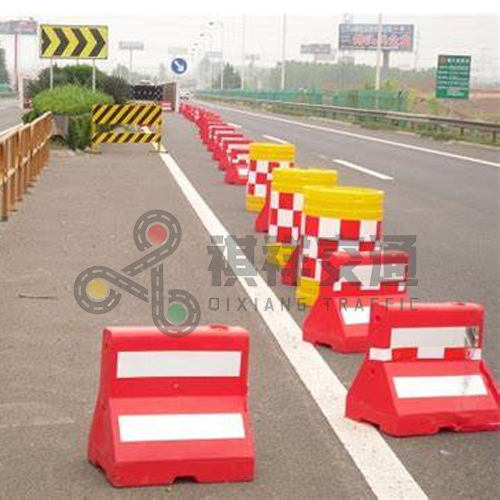The manufacturing process of a water filled barrier plays a vital role in ensuring its functionality and effectiveness in a variety of applications. Water filled barriers are widely used in a variety of industries, including construction, traffic management, event security, and flood protection. These barriers provide a safe and effective way to create temporary fencing, control traffic flow, prevent flooding, and increase event safety. In this article, we will explore the manufacturing process of water filled barriers, from material selection to the final product.
The manufacture of a water filled barrier begins with the selection of quality materials. These barriers are typically made from durable polyethylene plastic that can withstand the impact of vehicles or the force of flooding. The plastic used in the manufacturing process is UV stabilized to ensure the barrier can withstand prolonged exposure to sunlight without deterioration. Additionally, the plastic is impact resistant, providing a strong and reliable barrier in a variety of applications.
Once the material is selected, the manufacturing process begins with forming the barrier body. This is usually done through a process called blow molding, which involves heating the plastic and then using compressed air to shape it into a hollow shape. The blow molding process can create complex shapes and designs, ensuring that barriers can be customized to meet the specific needs of different applications. The resulting hollow form serves as the main structure of the water filled barrier.
The next step in the manufacturing process is to reinforce the barrier’s structure. This is usually done by incorporating internal ribs or other features to increase the overall strength and durability of the barrier. These reinforcements help the barrier maintain its shape and integrity, even under severe impact or pressure. By adding these reinforcements during the manufacturing process, the barrier is able to withstand a variety of forces and maintain its effectiveness in a variety of applications.
After the basic structure of the water filled barrier is formed and reinforced, the next step in the manufacturing process is to add the ability to hold water. This is usually accomplished by incorporating a series of chambers or compartments within the barrier body, which can be filled with water to provide weight and stability. The chambers are engineered to ensure the barrier remains balanced and secure when filled with water, making it an effective solution for controlling traffic, protecting the perimeter of an event, or providing flood protection.
Once the barrier’s water-holding capacity has been increased, the manufacturing process moves into final finishing and quality control steps. This typically involves trimming any excess material, adding finishing touches such as reflective panels or signage, and conducting thorough quality checks to ensure each barrier meets the necessary standards for strength, durability, and reliability. These final steps are critical to ensuring the water filled barrier is ready for a variety of applications.
In summary, the manufacturing process of a water filled barrier is a carefully planned series of steps that ensures a durable, reliable, and effective product. From the selection of quality materials to the formation of the barrier body, the addition of reinforcements, the incorporation of water retention capabilities, and the final finishing and quality control steps, every stage of the manufacturing process plays a vital role. Create products that meet the diverse needs of different industries. By understanding the manufacturing process of water filled barriers, we can better understand the thought and care that goes into creating these important products.
Post time: Dec-19-2023







